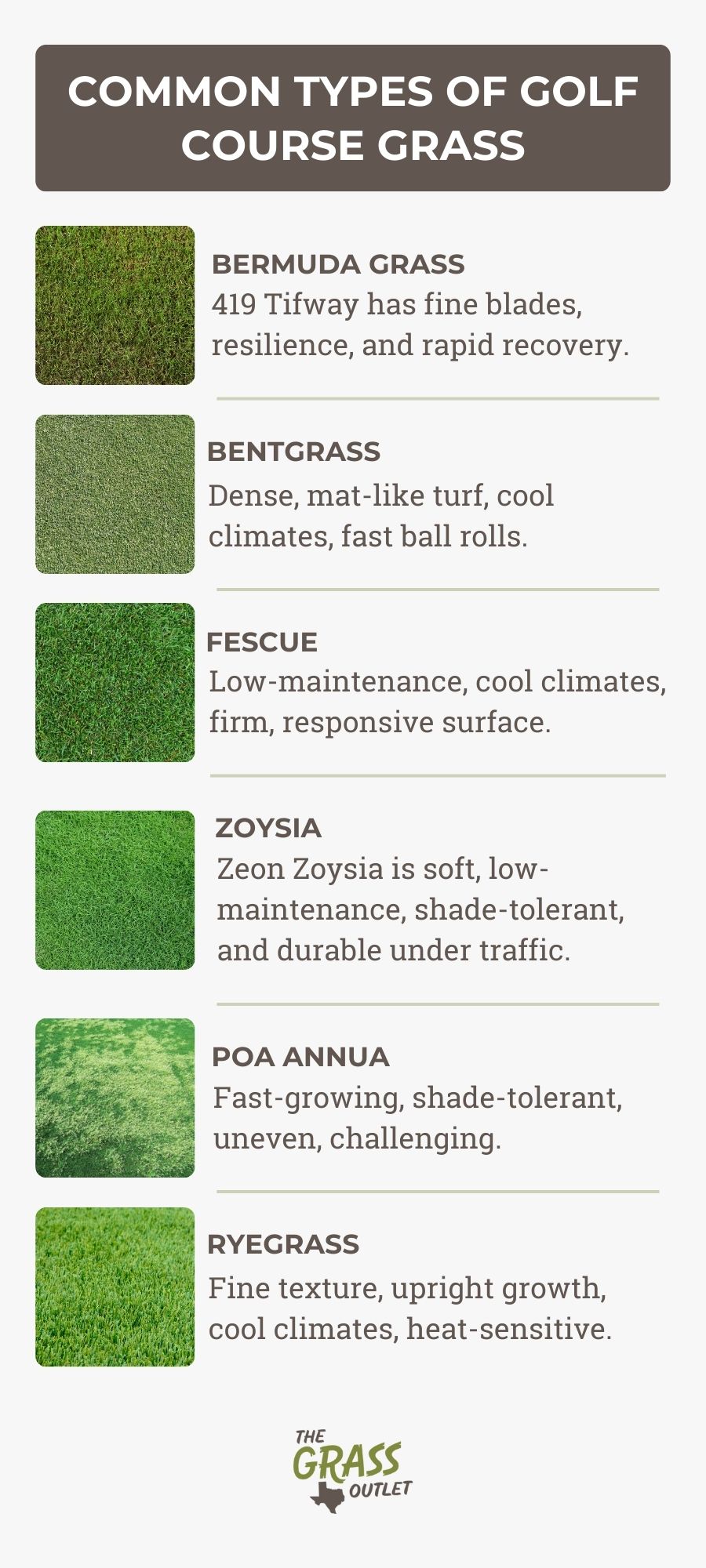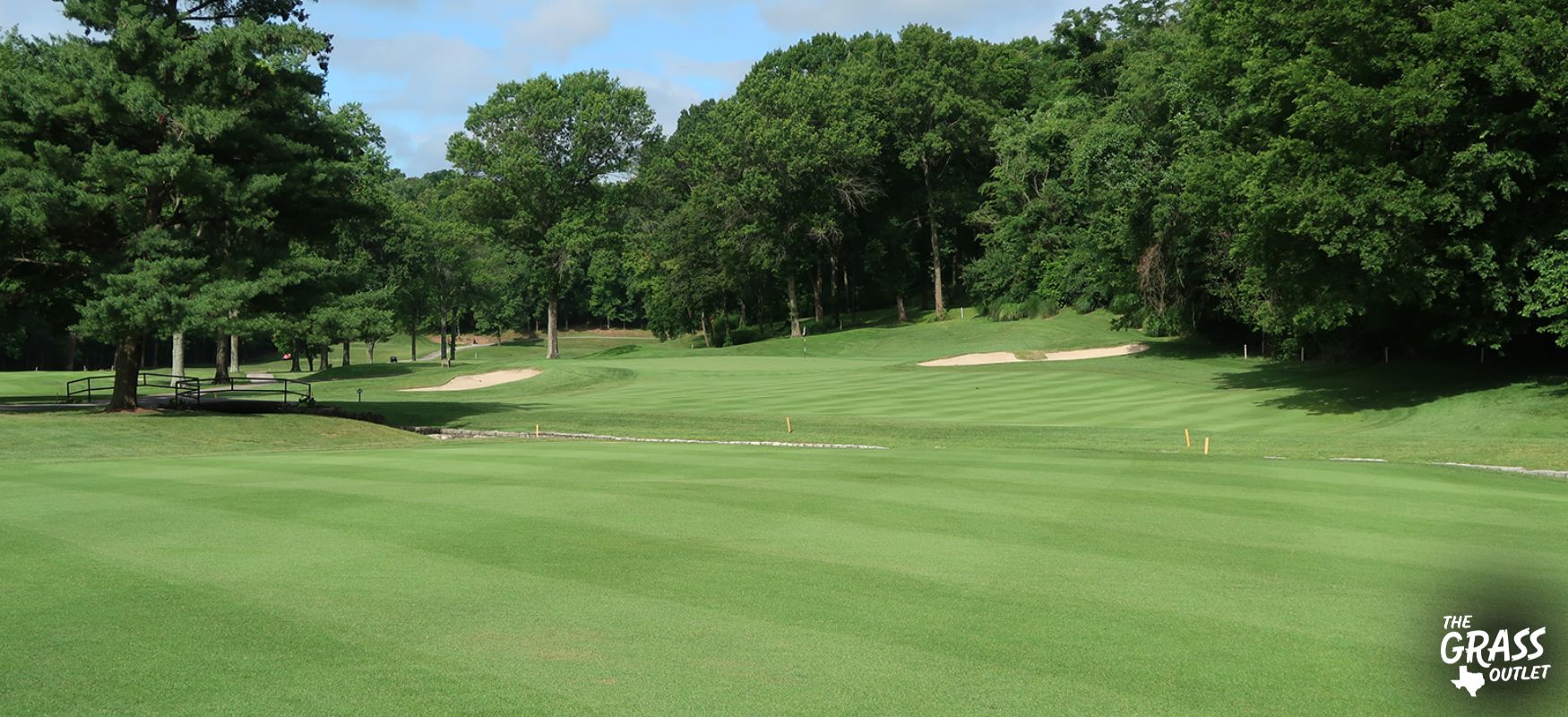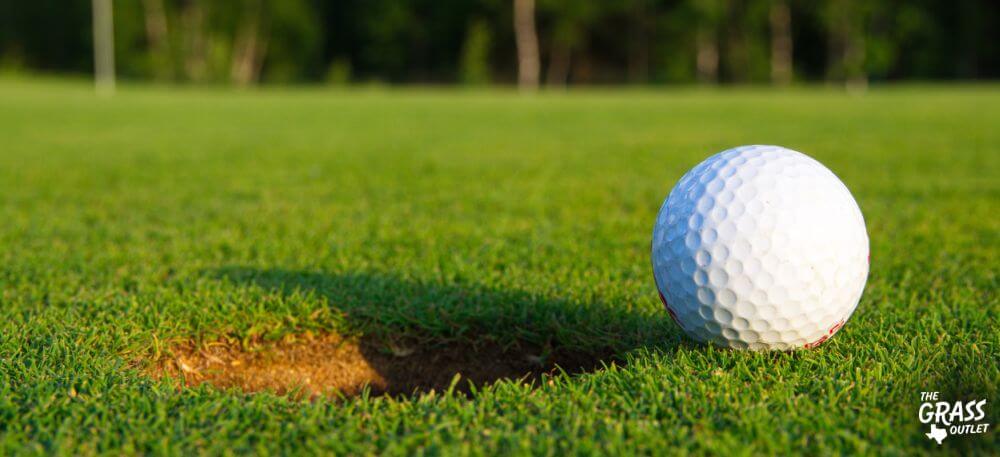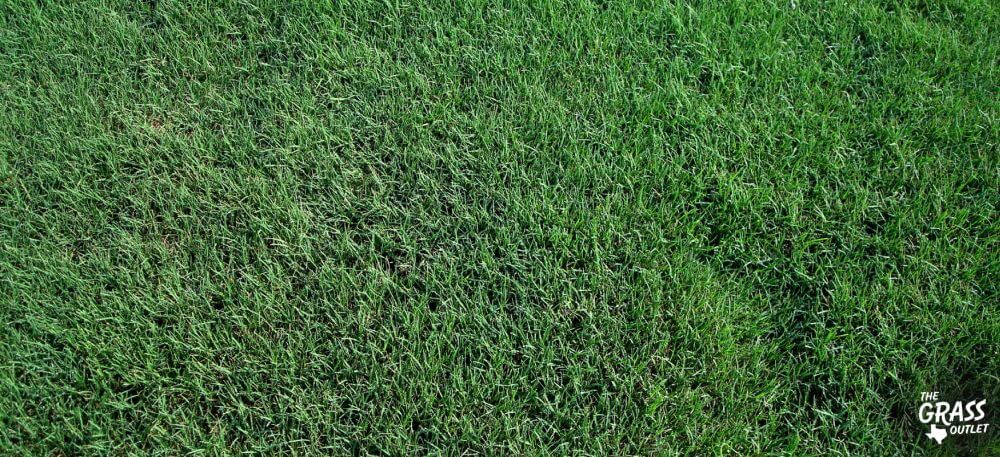Types Of Grass Used On Golf Courses
The type of grass on golf courses affects the whole golfing experience, but more crucially, it dramatically influences the players’ performance, too.
Why Is It Important To Choose The Suitable Grass For Golf Courses?

Not all golf courses are the same. When planning and making grass choices, each landscaper or investor should consider several factors, from the local climate to the turf’s resilience to traffic and its capacity for self-repair.
In the following lines, we provided an overview of some of the most common types of golf course grass, mapping their characteristics and notable distinctions among them.
Bermuda
Bermuda grass has remained one of the most popular choices for golf courses.
It is a warm-season grass known for its resilience to drought-like conditions, extreme heat, and high humidity. Bermuda spreads laterally fast when mowed often, giving it a quick self-repair capability, with the ability to withstand both foot and cart traffic.
Thanks to its exceptional drought and heat tolerance, this type of grass is prevalent in the hotter regions of the American South, especially Texas, where it has been the most popular type of golf course grass for a long time.
Bermudagrass offers a firm and fast playing surface, becoming even more reliable as its roots grow deeper, and many amateur players commonly prefer it. However, the direction of Bermudagrass growth significantly influences putting, with the ball typically breaking in the direction of the grain. That’s why golfers must take care during chip shots, as Bermuda tends to snag clubs.
TPC Sawgrass, home to the PGA Tour headquarters, which hosts one of its signature events – The Players Championship – prefers Bermudagrass on its course, especially for its ability to be mown low and provide fast greens.
Why Is 419 Tifway Bermuda Grass Recommended For Golf Courses?
419 Tifway Bermuda grass has become the most widely used warm-season turf across the United States and remains the most commonly planted Bermudagrass in Texas for decades. Recognized for its fine blades, 419 Tifway, when regularly mowed at a low height, forms a compact turf frequently chosen for high-traffic areas. Its rapid growth pattern guarantees a quick recovery from any damage. This type of grass is strong and resilient under heavy use conditions, and its rapid growth pattern guarantees a speedy recovery from any damage. It also looks beautiful and offers golfers a comfortable playing surface.
Bentgrass
Bentgrass, a cool-season grass with slender blades, can be closely mown. Such a dense mat-like appearance enhances the overall gaming experience, and this characteristic is often considered the main reason for its popularity.
This grass can’t withstand hot conditions, so it requires a lot of water when temperatures soar. It is also why people use it in coastal regions of the US that experience milder, cool summers, such as the Pacific Northwest and New England, or the UK and Ireland. But even in areas with cooler climates, Bentgrass may have a soft texture during summer, getting slightly brownish.
The strategy behind playing on Bentgrass turf demands increased breaks. The ball rolls quickly on this surface, so professionals recommend an easy putt.
Fescue
As a slow-growing grass, Fescue only needs a little water and requires less frequent lawn mowing than other golf turfs. Like Bentgrass, it thrives in cooler climates, so it is present mainly in the Northeast, Northwest, and Upper Midwest of the US, as well as Scandinavia and the British Isles.
It provides a firm and responsive playing surface, while course operators appreciate it for its low-maintenance characteristics. However, players experiencing rough fescue grass should follow some valuable recommendations for playing on this turf, like taking less club, swinging more aggressively, or planning for the ball to go 50% of its typical distance.
Zoysia
Zoysia is a warm-season grass with cold tolerance, showing adaptability across various climates. Some even consider it the optimal golf turf for climate change. Zoysia also stands out because it requires minimal water, allowing courses to maintain a firmer texture than most grasses.
Zoysia stands up straight, which many players like, describing playing on it as almost cheating due to the perfectly teed-up ball. It is also known for its deep roots and excellent coloration. For these reasons, Zoysia has become very popular on golf courses. It is also a slower growing variety, meaning it requires much less mowing. Challenges it brings relate to potential golf course maintenance costs due to its tendency to produce dense thatch. It also sometimes looks ‘sticky,’ so golfers should avoid playing bump and run-type shots on this grass type.
Why Is Zeon Zoysia Recommended For Golf Courses?

Zeon Zoysia is a fine-bladed Zoysia grass, known as the “Barefoot Grass” due to its soft cushion-like turf. Like other Zoysia varieties, it excels in shaded and sunny areas, demonstrating efficient water use. Additionally, it demands less fertilizer compared to different grass varieties.
Its resilience to various conditions proves the best in the Southeast, where summers are warm, with rainy periods of significant droughts and cooler autumns.
Of particular note is its exceptional durability under heavy use. Zeon Zoysia grass can quickly recover from the continuous traffic, making it well-suited for golf courses with a constant stream of golfers traversing the fairway.
Poa Annua
Poa Annua is known for its rapid growth. Adaptable to low-light and damp conditions, Poa also withstands heavy traffic. This type of grass has shallow roots, which might be challenging in areas with low rainfall. To address this, manual watering to ensure adequate moisture is needed.
Poa grass has a beautiful color, which is why golf courses on the West Coast love it. Professionals consider it as an ‘invasive weed.’ Due to it being a fast-growing grass that produces seedheads can create uneven putting surfaces, this turf grass provides golfers with an easy excuse for errant shots.
Poa Annua is considered an unpredictable grass; it requires golfers to strike the ball more solidly and with a well-considered angle of attack. However, some seasoned golfers appreciate the slight seedheads or discoloration caused by this grass, considering it a benefit as it leads to better visualizing their putting line.
Ryegrass
Another type of grass that struggles in hot conditions and prefers cooler climates, Ryegrass’ fine texture and growth nature make it an ideal choice for tee boxes and fairways.
Golfers’ approach to playing on Ryegrass, choice of a golf club, or hitting technique significantly depends on how rough or thick the course area is.
Due to its delicate texture and upright growth, this grass allows attractive mowing patterns. However, as it is not resilient to heat and becomes more vulnerable if mowed too low, using Ryegrass is usually not the first choice for golf courses.

Final Thoughts
Choosing the suitable grass for the golf course is crucial in creating an enjoyable environment for players and contributes to achieving excellence in golf course management.
If you have any questions about the grass variety you plan to order, please contact us at The Grass Outlet. We will be happy to give you recommendations related to your golf course soil, climate conditions, size of the course, etc.
For those engaged in the planning, construction, or investment in golf courses, it is essential to prioritize the selection of grass varieties that align with regional climate conditions. Besides local temperature and sunlight conditions, the optimal type of grass used on golf courses should show low-maintenance characteristics, be water-efficient, and demonstrate quick recovery from substantial use.







